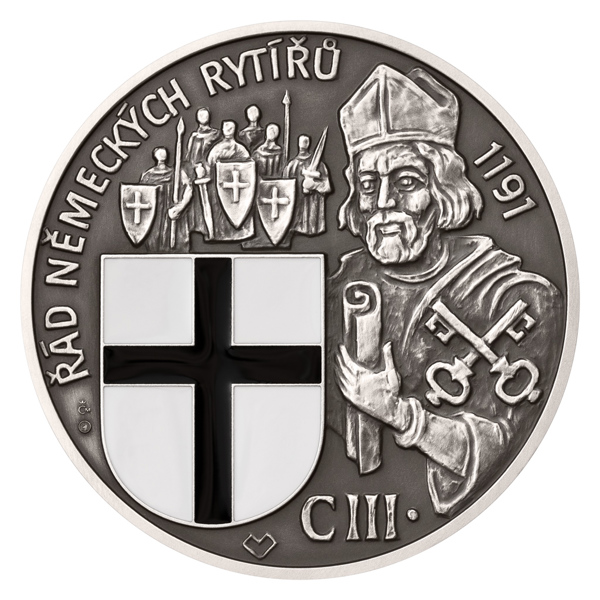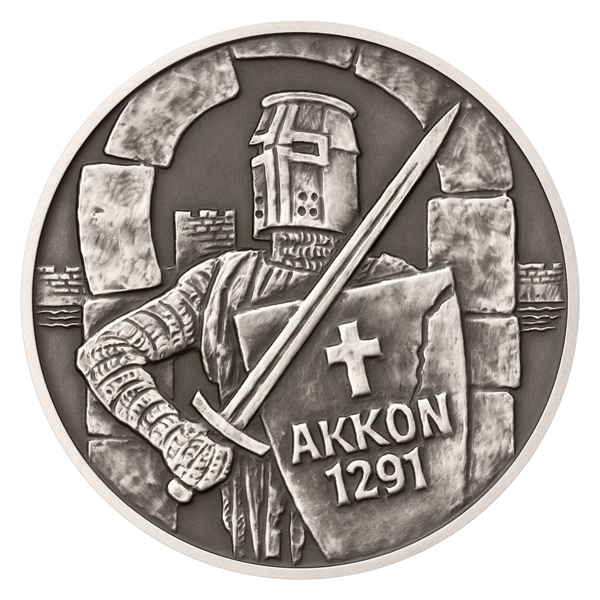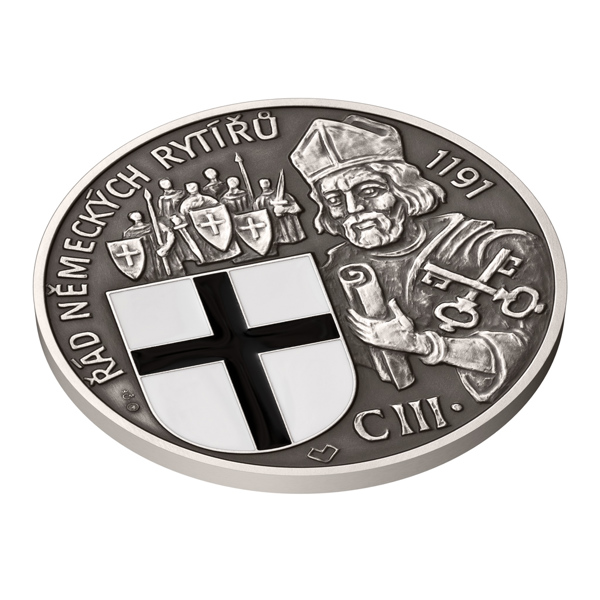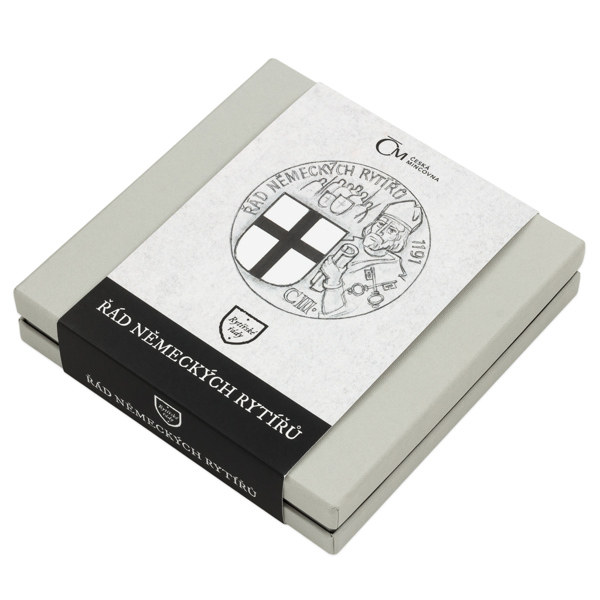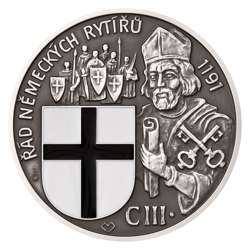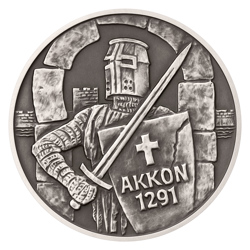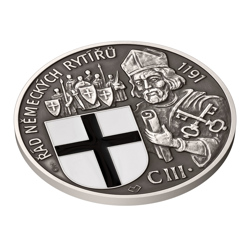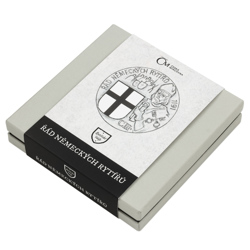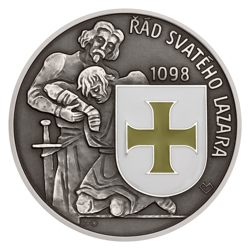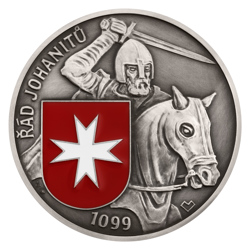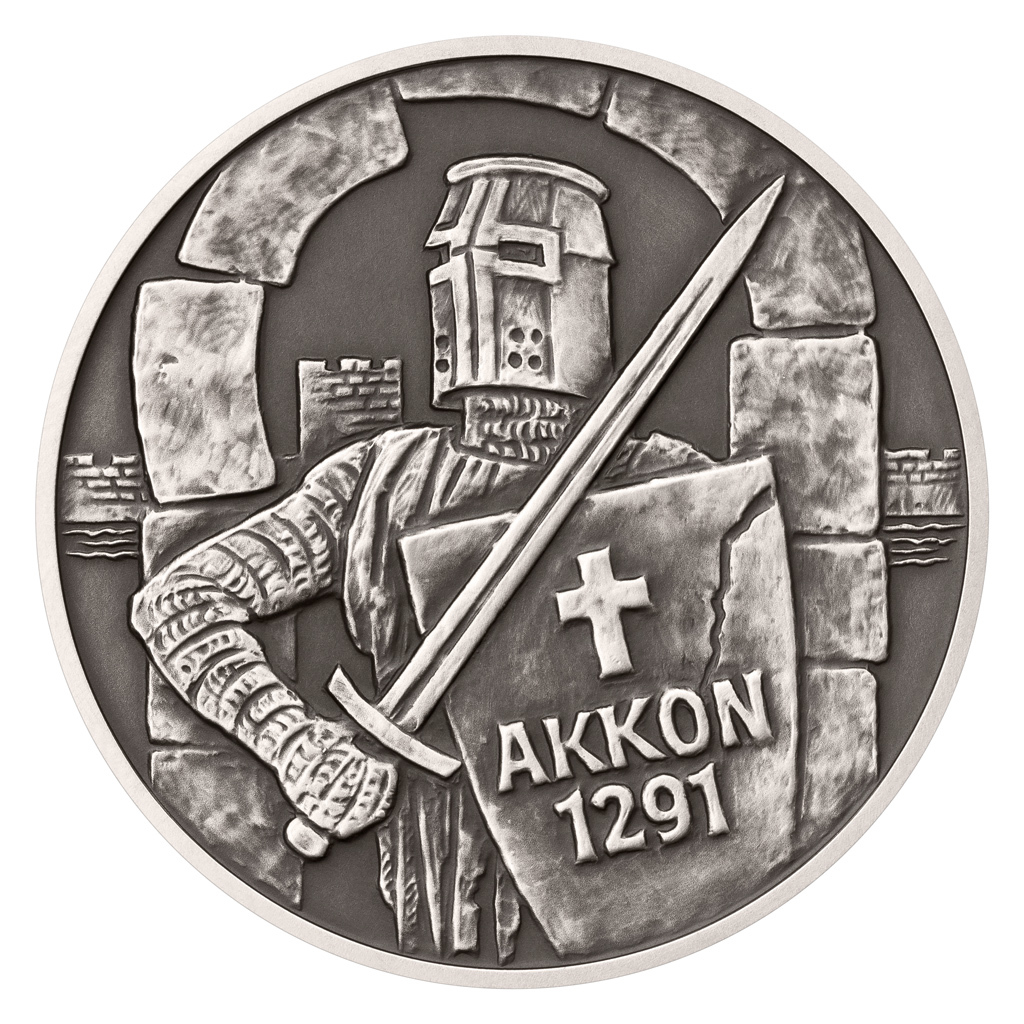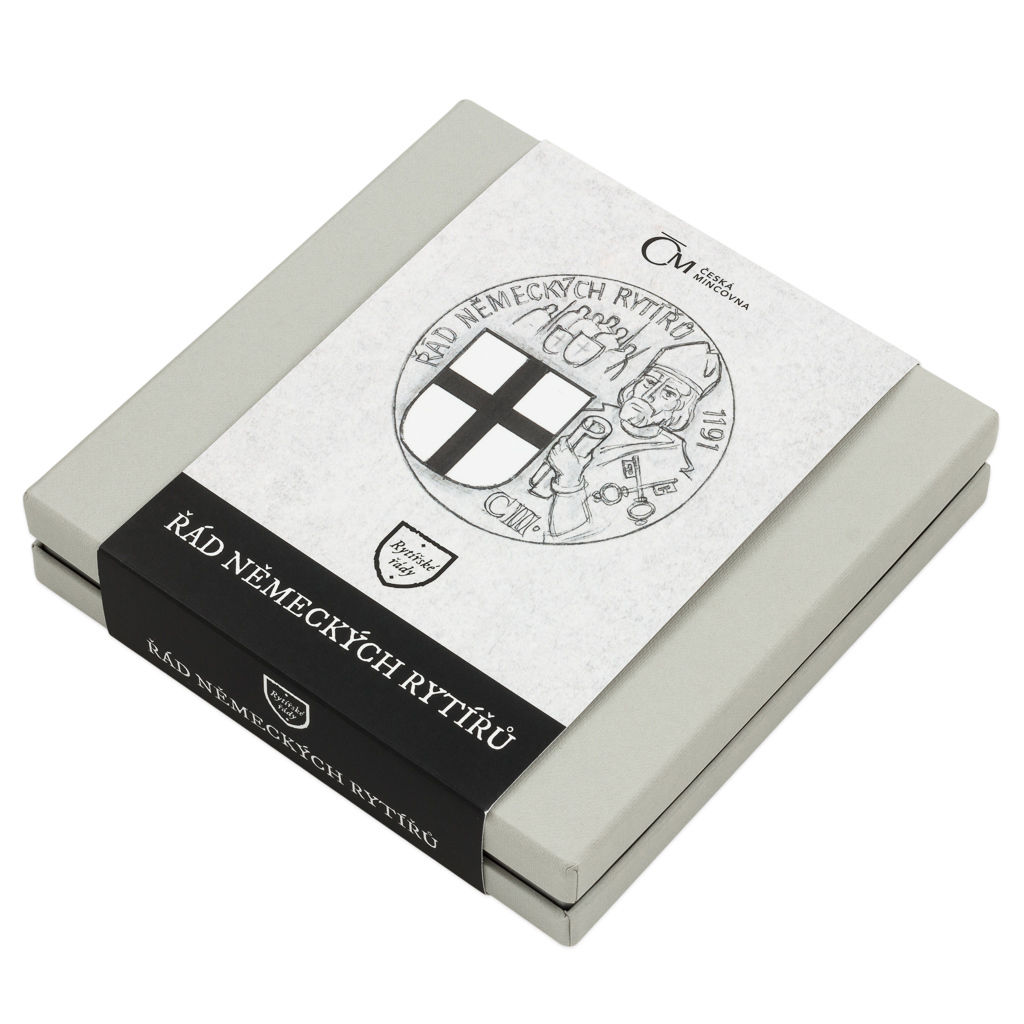Silver medal Knightly Orders - Order of Teutonic Knights stand
Personal pickup at the store
Knightly Orders
Michal Vitanovský recalls the fate of famous knightly orders through silver medals of the Czech Mint. This academic sculptor is the most authoritative - he himself is a holder of the Cross of Merit of the Holy Sepulchre and the Order of Merit of Malta. He dedicated the fourth edition to the Order of Teutonic Knights.
In 1190, during the Third Crusade, merchants from Bremen and Lübeck founded a field hospital in the besieged Akkon. The local fraternity, which cared for sick Christian pilgrims, was then supported by the German nobles and the Pope himself, who charged it with fighting the pagans. Thus, the Order of the Teutonic Knights was born, following the example of the Templars and the Johannites. Its members took part in the Holy Land campaign, but it was not until later that they gained a reputation as fearsome warriors - warlike, firmly disciplined and totally devoted to God. When the Christian states in the Middle East fell and the Crusaders had to withdraw, the German knights began to answer the call of the European rulers. They invited them into their countries to help them fight the barbarians. First they went to Transylvania to protect the eastern border of the Hungarian kingdom from attacks by the nomadic Cumans. They were successful in the fight, but at the same time their considerable ambitions were revealed when they tried to usurp the defended territory for themselves. Although they were expelled by the Hungarian king for this presumption, they were immediately recalled to Poland. Here, the Teutonic Knights confronted the pagan Baltic tribes - here the Order of German Knights stood up to the pagan Baltic tribes - speciality the Prussians, who did not even consider churches and monasteries in their raids. It allied with the Order of Teutonic Knights. and, despite strong opposition, completely conquered Prussia. In a strategic area close to the Baltic Sea and its trade routes, a powerful, well-organised and economically prosperous state of the Teutonic Order was established. This was followed by incursions into what is now Latvia, Estonia, Lithuania and the Orthodox Russian principalities. The Order enjoyed the favour of Western Europe, and hordes of settlers poured into its territory, gradually Germanising the Baltic. It was not only Germans and noblemen who became members of the Order. Almost anyone could become a German knight if they were from German lands or knew the German language. Moreover, the service of the Order could be temporary, which for many Western nobles represented a unique opportunity to gain combat experience or war booty…
The obverse side of the medal is dominated by the emblem of the Order with a black cross in a white field, which is made of coloured enamel. The figure commemorates the confirmation of the Order of the Teutonic Knights by the Pope. "The date of the foundation of the Order cannot be determined precisely. Several dates are suggested - for example, 1191, when the Order was confirmed by Pope Clement III, an able politician and one of the inspirers of the Third Crusade. The consecration of the Order by Clement III in the year of his own death elevated the German Knights to the elite of the Crusaders," explains academic sculptor Michal Vitanovský. The reverse side then presents the figure of a warrior from the Teutonic Knights and a view of the city of Akkon. "Akkon was the fateful place of the Order. It was in this port city that its history began to be written and where the era of the Crusader states in the Middle East ended. In the final defence of Akkon in 1291, all the German knights who defended it fell in one," adds the author of the medal.
The issue includes a special appendix which, in the words of Michal Vitanovský, introduces the Order of Knights and the individual details of the medal's relief.
 čeština
čeština
 slovenčina
slovenčina
 english
english
